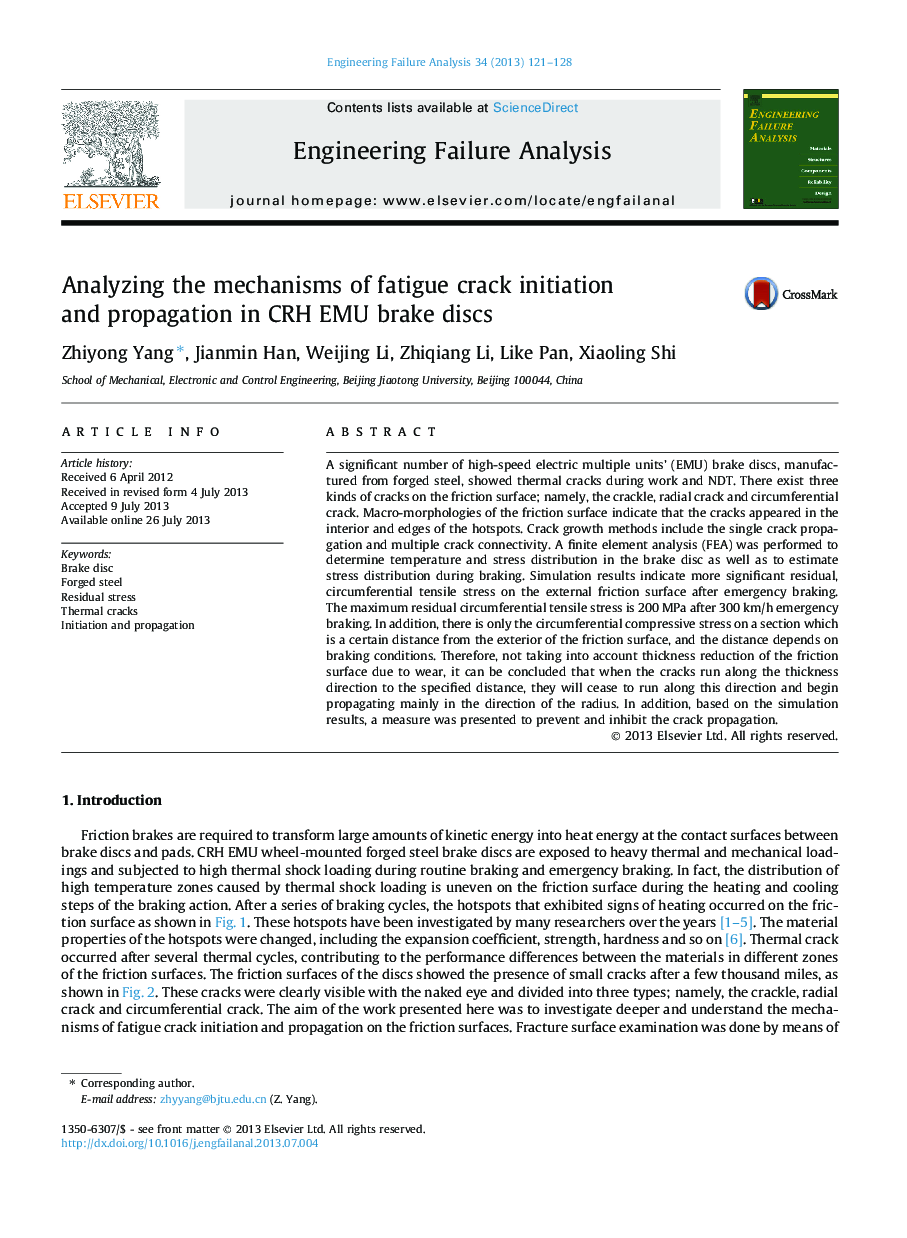| کد مقاله | کد نشریه | سال انتشار | مقاله انگلیسی | نسخه تمام متن |
|---|---|---|---|---|
| 768500 | 1462990 | 2013 | 8 صفحه PDF | دانلود رایگان |

• The cracks generally initiate in the interior and at the edges of the hotspots.
• There are two crack growth ways, multiple crack connectivity and single propagation.
• It is impossible for the cracks to run through the thickness of the friction surface.
• The failure of the disc is attributed to the length of the radial crack overrun.
• A brake model with long distance and low pressure could reduce the residual stress.
A significant number of high-speed electric multiple units’ (EMU) brake discs, manufactured from forged steel, showed thermal cracks during work and NDT. There exist three kinds of cracks on the friction surface; namely, the crackle, radial crack and circumferential crack. Macro-morphologies of the friction surface indicate that the cracks appeared in the interior and edges of the hotspots. Crack growth methods include the single crack propagation and multiple crack connectivity. A finite element analysis (FEA) was performed to determine temperature and stress distribution in the brake disc as well as to estimate stress distribution during braking. Simulation results indicate more significant residual, circumferential tensile stress on the external friction surface after emergency braking. The maximum residual circumferential tensile stress is 200 MPa after 300 km/h emergency braking. In addition, there is only the circumferential compressive stress on a section which is a certain distance from the exterior of the friction surface, and the distance depends on braking conditions. Therefore, not taking into account thickness reduction of the friction surface due to wear, it can be concluded that when the cracks run along the thickness direction to the specified distance, they will cease to run along this direction and begin propagating mainly in the direction of the radius. In addition, based on the simulation results, a measure was presented to prevent and inhibit the crack propagation.
Journal: Engineering Failure Analysis - Volume 34, December 2013, Pages 121–128